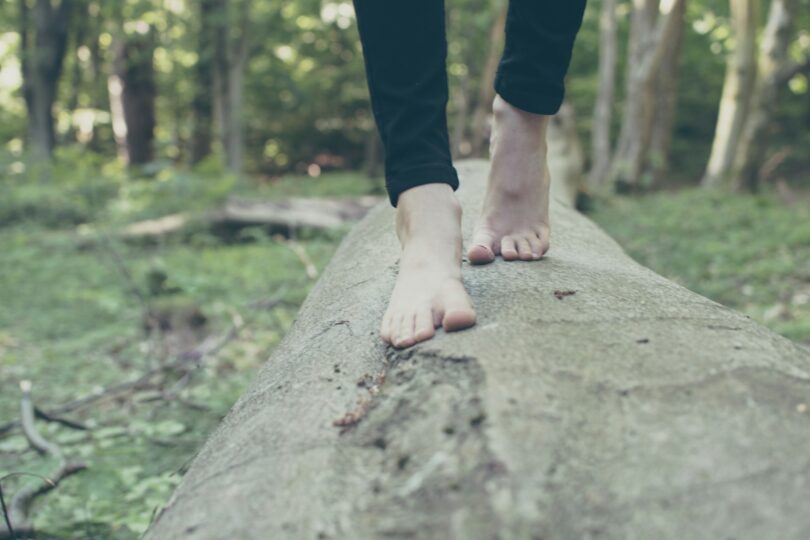Pay attention to your feet! You need them. Talk to your doctor if they look different, feel different or are not working for you the way they should. Your feet change as you age.
You want to be good to your feet, because your feet keep you steady. Foot issues can increase your risk of falling and breaking a hip or a shoulder. Keep in mind that your feet tend to grow larger over time, your arches fall, and you could need bigger shoes. Here are some foot care tips:
If your feet are swollen: You could have high blood pressure, gout or kidney problems. With gout, it’s often your big toe that swells.
If your feet are tingling: You might have diabetes.
If your skin between your toes or bottoms of your feet are cracked, red, or you have sores that won’t heal: Talk to your doctor.
If a dark line appears under a toenail: You could have skin cancer.
If you stop growing hair on your toes: Your veins might not be working as they should, preventing good blood flow.
If your feet are causing you pain, where are you feeling it?
- Fungal infections between the toes causing redness, blisters or itching: This is typically called athlete’s foot because the infection develops from sweat and moisture build-up in your feet as a result of exercise. Make sure you wash your feet, including the area between the toes, after exercise and then dry then to prevent infections. Use an over-the- counter fungal spray or cream to treat the infection. And, talk to your doctor.
- Toenail fungus is very common among older adults. It results from brittle and dry nails and reduced circulation to the feet as you age. Your toenail becomes discolored and thick. If it doesn’t hurt, you don’t really have to worry about it. But, it could spread to other toes.
- Ingrown toenails: To prevent them, cut toenails straight across. Do not round them at the edges.
- Blisters: You can pop a blister with a clean tool. But don’t take the top off. Simply put an antiseptic cream on with a bandaid until it heals.
- Bunions, hammertoes, corns or calluses. More than one in three older adults have bunions. They appear on the inside of your feet at the base of the big toe. Hammertoes are protrusions on the top of your toe that keep your toe from sitting straight and flat. With calluses and corns, there’s a thickening of your skin. Corns might also have some fluid.
- Plantar fasciitis: One in ten adults over 50 suffer from plantar fasciitis. It causes a pain on the bottom of your feet, which can be debilitating. It is an inflammation of the tissue on the bottom of your feet and across its full length. It might not be possible to prevent plantar fasciitis. It often results from exercise, when the muscles in your legs and feet are tight. And, you don’t want to stop exercising!!!!! But, you should be sure to take time to stretch your muscles, particularly your calves, before and after exercising.
What to do for your feet?
- Do not wear shoes that are tight. But, avoid wearing flip flops, which can aggravate foot issues, including arch pain and plantar fasciitis.
- Do not polish your toenails if they are discolored.
- Do not get callus shavers or foot peels.
- Avoid high heels!!!
- Exercise your feet. You can roll a tennis ball underneath them. Get a foot massage and do legs up the wall exercises. Soak your feet in water with vinegar. Wash and moisturize your feet every day.
- Do use suntan lotion on your feet to avoid sunburn and skin cancer on the tops and soles of your feet.
Warding off bunions, hammertoes, corns and calluses and easing pain:
- Keep your toenails clipped.
- Wear shoes that support your feet and do not pinch your feet
- Do foot exercises to develop the muscles in your feet.
- Wear padded bandaids or moleskins over the affected areas of your feet
- Soak your feet regularly and then moisturize them with a lotion containing urea.
- If the pain is preventing you from doing what you want to do, talk to a doctor about the costs and benefits of surgery. Use a pumice stone on calluses.
Treating plantar fasciitis and osteoarthritis:
- Ice your foot where it hurts early and often!
- Wear shoes that do not bend.
- Walk a little, even if it hurts.
- Stick to bicycling, swimming and other exercises that are not high-impact; take a break from activity that’s hard on your feet.
- See a physical therapist.
- Get a shoe insert tailored to your feet
Here’s more from Just Care:










